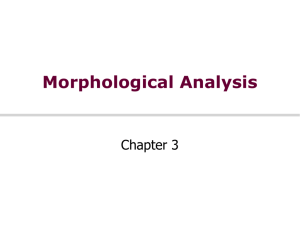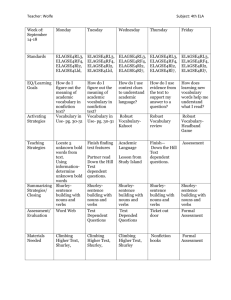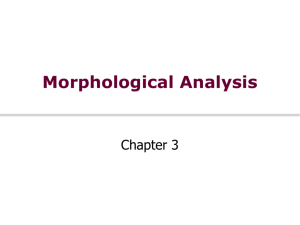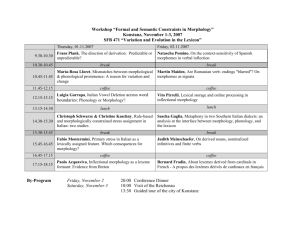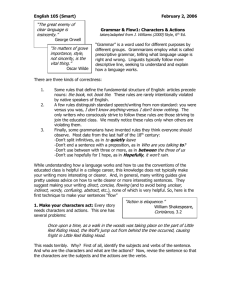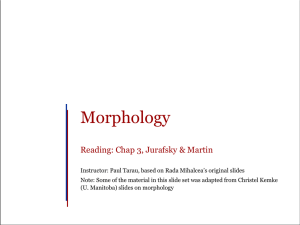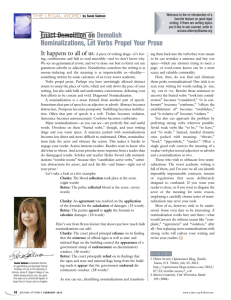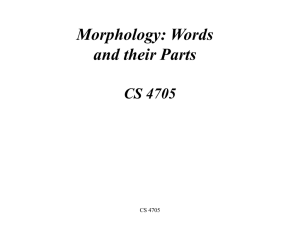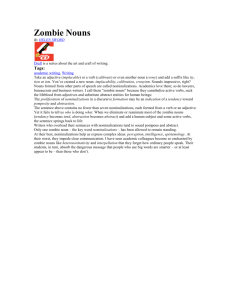Gildea - Linguistics - University of Oregon
advertisement
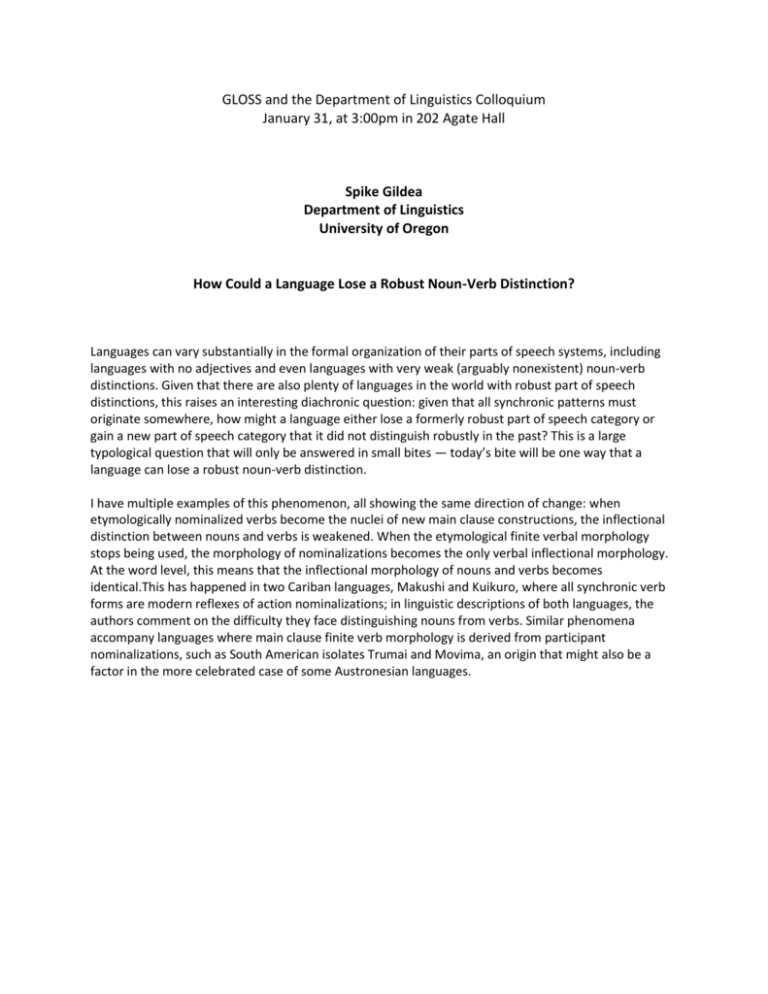
GLOSS and the Department of Linguistics Colloquium January 31, at 3:00pm in 202 Agate Hall Spike Gildea Department of Linguistics University of Oregon How Could a Language Lose a Robust Noun-Verb Distinction? Languages can vary substantially in the formal organization of their parts of speech systems, including languages with no adjectives and even languages with very weak (arguably nonexistent) noun-verb distinctions. Given that there are also plenty of languages in the world with robust part of speech distinctions, this raises an interesting diachronic question: given that all synchronic patterns must originate somewhere, how might a language either lose a formerly robust part of speech category or gain a new part of speech category that it did not distinguish robustly in the past? This is a large typological question that will only be answered in small bites — today’s bite will be one way that a language can lose a robust noun-verb distinction. I have multiple examples of this phenomenon, all showing the same direction of change: when etymologically nominalized verbs become the nuclei of new main clause constructions, the inflectional distinction between nouns and verbs is weakened. When the etymological finite verbal morphology stops being used, the morphology of nominalizations becomes the only verbal inflectional morphology. At the word level, this means that the inflectional morphology of nouns and verbs becomes identical.This has happened in two Cariban languages, Makushi and Kuikuro, where all synchronic verb forms are modern reflexes of action nominalizations; in linguistic descriptions of both languages, the authors comment on the difficulty they face distinguishing nouns from verbs. Similar phenomena accompany languages where main clause finite verb morphology is derived from participant nominalizations, such as South American isolates Trumai and Movima, an origin that might also be a factor in the more celebrated case of some Austronesian languages.
